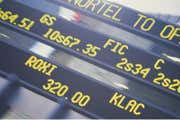Liquidity is an important concept in trading. It describes the ability to execute orders of any size quickly and efficiently without causing a significant change in price. In simple terms, liquidity refers to the ease with which you can buy and sell shares (or contracts). Liquidity can be measured in terms of:
- Width – How tight is the bid/ask spread?
- Depth – How deep is the market (how many orders are resting beyond the best bid and best offer)?
- Immediacy – How quickly can a large market order be executed?
- Resiliency – How long does it take the market to bounce back after a large order is filled?
Markets with good liquidity typically trade with tight bid/ask spreads and with enough market depth to quickly fill orders. Liquidity is important because it helps ensure that your orders will be:
- filled
- filled with minimal slippage
- filled without substantially affecting price
It’s important to note that some of these commodities – such as oats – are very thinly traded, which means that prices can rapidly move up or down. It can also make it difficult to exit a position (especially a large one) at a good price. As such, it is recommended that you research any commodity market before placing trades to ensure there is adequate liquidity.
-
 Investing
InvestingUnderstanding Market Orders And Limit Orders
A market order executes a transaction as quickly as possible at the present price. Immediacy is the main concern. A limit order is executed at or below a purchase or sale price. Price is the ... -
 Trading
TradingIntroduction To Order Types
A trade order is an instruction that is sent to a broker to enter or exit a position. Learn about the various types available to investors. -
 Investing
InvestingHow To Calculate The Bid-Ask Spread
It's very important for every investor to learn how to calculate the bid-ask spread and factor this figure when making investment decisions. -
 Financial Advisor
Financial AdvisorSmall-Cap Investing and Illiquidity
Do your homework, have a long-term view, exercise patience, you'll find that investing in small market capitalization stocks is no riskier than investing in large stocks. -
 Financial Advisor
Financial AdvisorWhy Liquidity Matters in the Corporate Bond Market
Professional analysis and constant monitoring of liquidity risk when investing in corporate bonds is highly important. -
 Trading
TradingIs Liquidity Improved By High Frequency Trading (HFT)?
Is the market liquidity provided by high frequency trading a reality or an illusion? -
 Investing
InvestingNarrow Your Range With Stop-Limit Orders
With stop-limit orders, buyers protect themselves from prices too high for their tastes. -
 Personal Finance
Personal FinanceHow brokers can avoid a market-maker's tricks
Ensure that you and your clients are getting the best deal by avoiding these three pitfalls.



